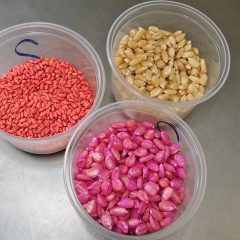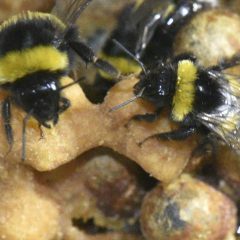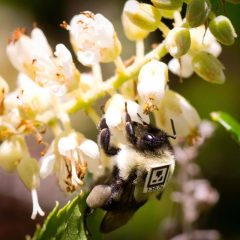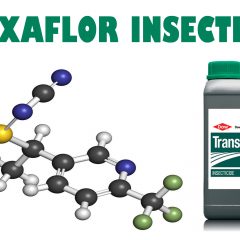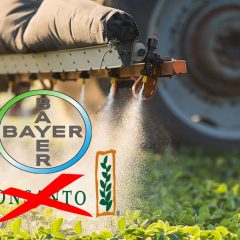Search results for “neonicotinoids”:
It appears that scientists, and farmers too, are taking a closer look at the ubiquitous use of neonicotinoid seed treatments in US corn, soybean and other crops. Neonics are powerful insecticides used to coat the outside of a wide variety of seeds including grain and oilseed crops. The brightly-dyed layer of pesticide is designed to […]
Read More, References, Comment »
The Dietary Risk Index, or DRI, is a complex analytical system that quantifies the relative risks stemming from pesticides in food. The DRI value for a given food-pesticide combination takes into account the level of residues in the food, the chronic toxicity of the pesticide, and the typical number of grams in a single serving […]
New science has, for the first time, replicated in a lab experiment the neural impacts on baby bees triggered when foraging adults are exposed to one type of insecticide. The widely used neonicotinoid (“neonic”) insecticide imidacloprid was the focus of the study done by a team at Imperial College London, whose key finding is summarized […]
Read More, References, Comment »
Within hours on this Monday, May 13, 2019, the jury in the Pilliod Roundup-non-Hodgkin lymphoma (NHL) trial in Oakland, California is suspected to reach a verdict. It is highly likely the verdict will be the third in a row in favor of plaintiffs, following on the heels of one earlier this spring in the Hardeman […]
Read More, References, Comment »
A Scientific American piece on neonicotinoid insecticides begins with a fascinating story about a wildlife rehab clinic in Montana. In the 1990s, a “bizarre trend” was noticed — an unusual number and diversity of birth defects in roadkill deer and other big game autopsied at the clinic. Scientists at the clinic pondered what could have […]
Read More, References, Comment »
Two years ago in 2017, scientists with the USGS and the University of Iowa first reported that neonicotinoid insecticides were “persistent” in drinking water samples collected at the University’s Iowa City campus during a seven week period after the corn planting season (May-July). The reason why was no mystery — at least 80% of the GMO […]
Read More, References, Comment »
We know that neonicotinoid insecticides are no-good for bees and other pollinators, even at very low levels of exposure. We know the major neonic — imidacloprid (Admire®) — is the single most acutely toxic pesticide to bees ever discovered, narrowly edging out the former #1 methyl parathion. But scientists are still trying to figure just […]
Read More, References, Comment »
With neonicotinoid insecticides under fire for contributing to pollinator decline, Dow AgroSciences is pushing its sulfoxaflor insecticide as an alternative. As Environmental Health News reports, Dow applied to the EPA for an expansion of the registration of sulfoxaflor to allow use on “rice, avocados, residential ornamentals and at tree farms and greenhouses.” But, is this new […]
Read More, References, Comment »
In a now-familiar move, the Trump administration is rolling back an Obama-era ban on the planting of GMO crops on federal lands managed by the United States Fish and Wildlife Service (USFWS). As Reuters reports, this prohibition also included the use of neonicotinoid insecticides and applies to the federal wildlife refuge system, potentially impacting around […]
Read More, References, Comment »
On Thursday, June 7, 2018, Bayer’s $66 billion purchase of Monsanto will close, and the world’s most powerful pesticide, seed, and ag biotechnology company will be born. Within months, according to Bayer’s CEO, the Monsanto name will be dropped, and for good reasons. This is very big news in the world of big ag. News […]
Read More, References, Comment »

